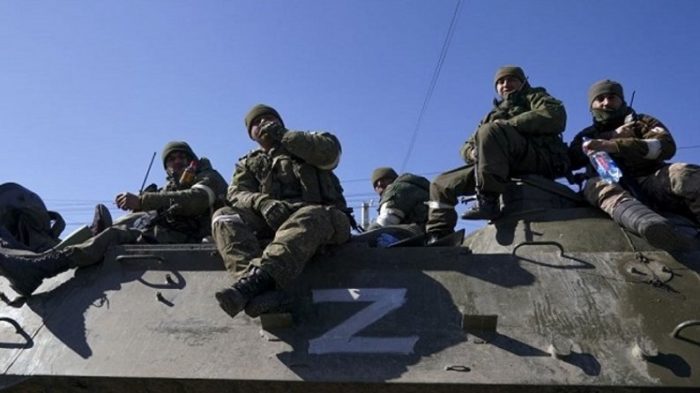Frontline report: Ukrainian forces conducting twin encirclements in Kursk Oblast, trapping Russian troops
Ukrainian forces are encircling Russian troops in two strategic locations in the Kursk Oblast, creating so-called "cauldrons" in Malaya Loknya and Martynovka. These encirclements have isolated substantial Russian formations, cutting off their supply lines and setting the stage for intense clashes.


Today there are a lot of updates from the Kursk direction.
Here, in a bold and strategic maneuver, Ukrainian forces have successfully encircled several key settlements, effectively isolating substantial Russian troop formations and setting the stage for intense clashes.
As the encirclement tightens, the trapped Russian forces face the prospect of imminent Ukrainian offensives, some of which have already resulted in devastating losses for the Russians.

Recently, Ukrainian Commander-in-Chief Alexander Syrskyi revealed a map during a televised session of the Ukrainian Congress of Local and Regional Authorities, showcasing the current front line in Kursk Oblast. Notably, Syrskyi’s map substantiated earlier speculations, highlighting several cauldrons where Russian troops are effectively surrounded and cut off from their supply lines.
Malaya Loknya cauldron
One of the most notorious cauldrons has formed north of Sudzha, near Malaya Loknya, marking a significant tactical victory for Ukrainian forces. In the early stages of the Kursk incursion, Ukrainian sabotage and reconnaissance units executed a deep penetration into Russian-held territory, advancing over 15 km north of Malaya Loknya along the road to Lgov. This swift and decisive maneuver was crucial in encircling the Russian forces.

The unexpected speed and depth of the Ukrainian advance caught the Russian troops off guard, leading to the entrapment of a substantial number of Russian units in Malaya Loknya at the very outset of the offensive, paving the way for their prolonged isolation. Ukrainian sabotage and reconnaissance groups effectively employed ambush tactics along key roads, preventing Russian forces from regrouping or escaping the area. These strategic actions were crucial in maintaining the isolation of the encircled Russian units, cutting off any potential reinforcements or escape routes.
As a result of this sustained isolation, most of the trapped Russian forces were either annihilated in combat or forced to surrender. However, unlike other encircled Russian troops, those in Malaya Loknya have managed to hold out much longer. Their prolonged resistance can be attributed to their use of the former women’s penal colony as a fortified stronghold. The prison complex’s robust infrastructure has provided significant defensive advantages, enabling these forces to resist far longer than others in similar situations.

Recent reconnaissance data confirms that Ukrainian forces have successfully secured critical terrain features and transportation routes in all directions surrounding Malaya Loknya. This thorough control of the flanks has established a multi-layer defense system, effectively stifling any potential Russian breakout attempts.
Recently published geolocated images reveal intense Ukrainian assaults on the surrounded Russian forces in the area. The images captured the prison pavilions in the background while a German-made BMP Marder infantry fighting vehicle from the 95th Assault Brigade unleashes a powerful attack on two auxiliary buildings adjacent to the prison fences.

The Marder’s 20 mm autocannon obliterates the structures, reducing them to ashes. Another video, also filmed near the prison, shows Marder vehicles utterly destroying several nearby buildings, further tightening the noose around the beleaguered Russian troops.
Martynovka cauldron
Ukrainian forces are now establishing a second, potentially even more devastating cauldron just 12 km east of the first one. Russian military analysts report that Ukrainian troops are encircling Russian forces in Martynovka. A glance at the topographic map reveals Martynovka’s strategic significance: situated just 5 km northwest of Sudzha on elevated ground, it sits at the foot of the R200 highway, a crucial artery for troop movements and logistical supplies.

Securing the front line beyond Martynovka is a critical priority. If this position were to fall into Russian hands, the defense of Sudzha would be severely compromised. Martynovka’s elevated location, proximity to Sudzha, and access to a key logistical supply route make it a strategic lynchpin that could greatly enhance Russian control over the area.

Ukrainian forces have advanced to encircle Martynovka from the north, pushing toward Pushkarnoe, while another offensive is advancing from the south, originating from Russkaya Kopelka, now fully under Ukrainian control. This maneuver poses a significant threat to the Russian troops, who are at risk of being trapped in the cauldron without the possibility of escape.
As a result, elements of the Russian 810th Naval Infantry Brigade have been caught in a pocket within the Martynovka area. A significant incident, widely reported by Russian forces, involved images of a soldier from the Russian 11th Airborne Brigade allegedly leading conscripts out of the Martynovka pocket. The footage shows the veteran paratrooper recording himself as he guides a single-file line of conscripts out of the encirclement.

This event underscores that even three weeks into the Kursk incursion, Russian forces have resorted to deploying conscripted soldiers in some of the most critical and intense areas of the conflict. Professional units are being conserved, typically deployed only in desperate situations where poorly trained conscripts are unable to offer effective resistance.
Conclusion
Overall, the formation and maintenance of the Malaya Loknya and Martynovka cauldrons highlight the strategic and tactical proficiency of Ukrainian forces in this offensive. These operations demonstrate their capability to execute deep penetration maneuvers, effectively isolate enemy units, and consolidate territorial gains despite counterattacks.
Additionally, the ongoing deployment of Russian conscripts, even at critical points near Sudzha, suggests that Russian commanders are still grappling with the challenge of minimizing troop and reserve redeployment from other front lines, particularly in southern and eastern Ukraine. The situation presents favorable prospects for the further expansion and consolidation of Ukrainian-controlled territory in the Kursk Oblast.
In our regular frontline report, we pair up with the military blogger Reporting from Ukraine to keep you informed about what is happening on the battlefield in the Russo-Ukrainian war.



